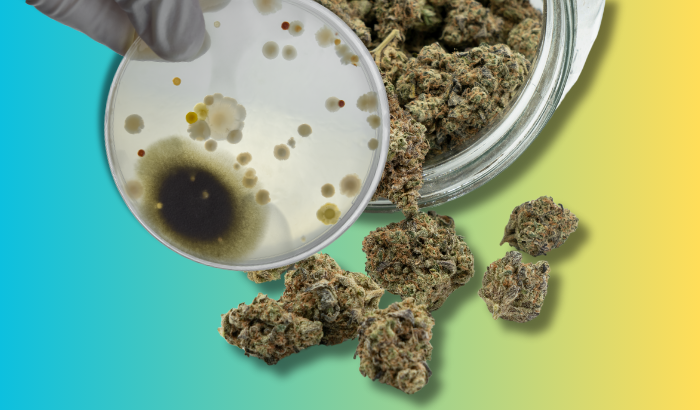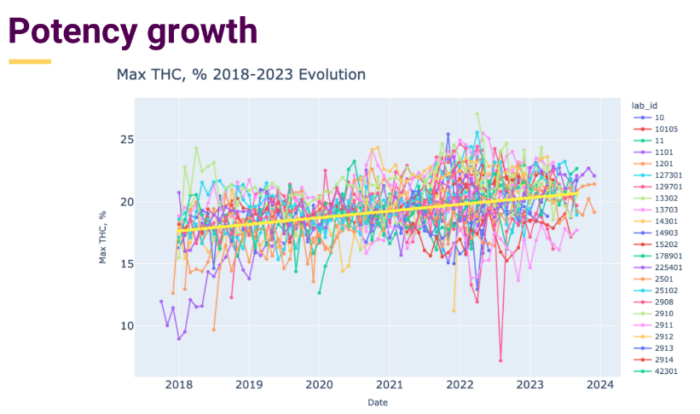
Multistate data set enables researchers to explore failure rates by strain across the country
It’s hardly hyperbolic to say researchers are on the cusp of being able to impugn facets of cannabis that scientists only dreamt of understanding a decade ago. As the team at MCR Labs explains, these developments have come in large part “thanks to mandatory compliance testing programs in legalized states,” which has led to “more data available on cannabis than any other crop in history.”
Let that sink in. MCR is being modest, since its own researchers have been among those who filed public information requests in multiple states (including Massachusetts) to obtain these neverending spreadsheets, and who started parsing the resulting data sets to understand a range of critical industry issues. So far, they have identified trends related to potency growth, safety screen fail rates, and much, much more.

It’s a powerful and growing database, with the potential to smoke out lab fraud and other problems that impact consumers and business stakeholders alike. And while some of the policy solutions that researchers are extracting and advocating for may take months or even years to put in place, in the meantime, MCR is showing how the info it has collected can help cannabis growers and companies.
Among the questions they can answer via trend analysis: “Which policies have led to the most profitable markets? Which policies have resulted in the safest cannabis markets? What limits should be set on each safety screen?”
And in a recent blog post, the MCR team looked at “data on cultivars and their results from total yeast and mold screens,” explaining that the “most common action limit for total yeast and mold is 10,000 CFU/g (colony forming units per gram).” “As such,” they “wanted to see how often each cultivar passes the 10,000 CFU/g threshold.”
The results, using testing data from 17 states, include …
Cultivars most often exceeding 10,000 CFU/g Total yeast and mold:
- Gelato 33: 73.77%
- Rainbow Sherbert #11: 57.14%
- Bubba Kush: 43.08%
Cultivars least often exceeding 10,000 CFU/g Total yeast and mold:
- Devil Driver: 0%
- Mexican Flan: 0%
- Amsd: 0%
- Do-Si-Dos: 0%
- Orange Soda: 0%
And that is just the start of what their aggregated test results can show. As MCR explains, “It’s an exciting time for cannabis scientists, as there is a treasure trove of vital information that can be extracted and implemented from these large datasets.”
Keep up with Talking Joints Memo for further coverage of these multistate data sets and the product and industry issues they shed light on.

























